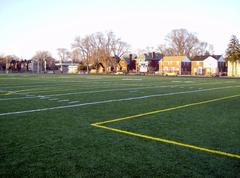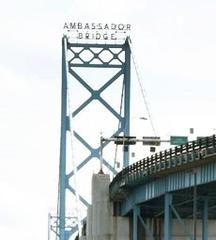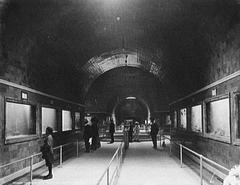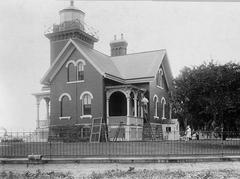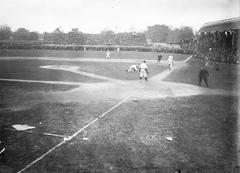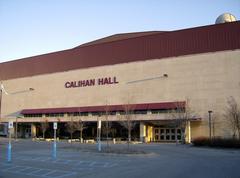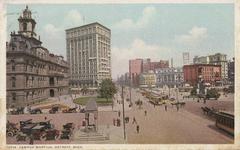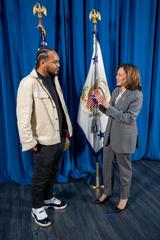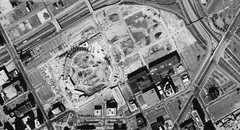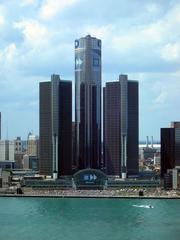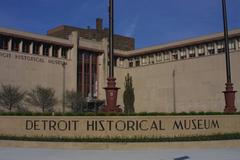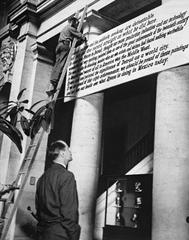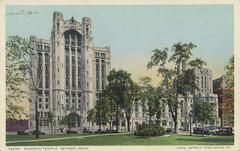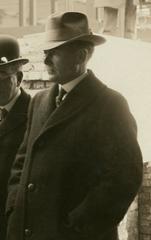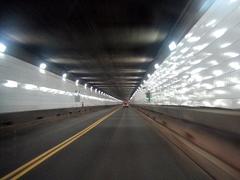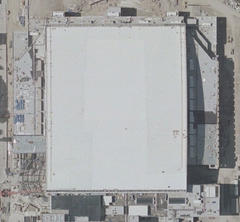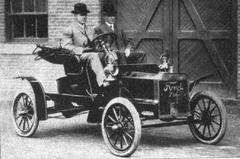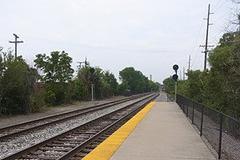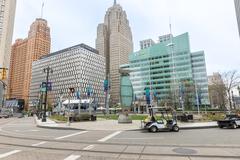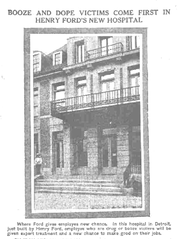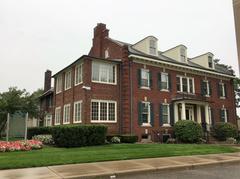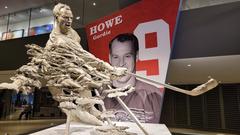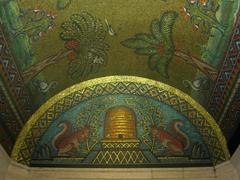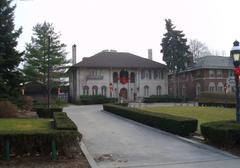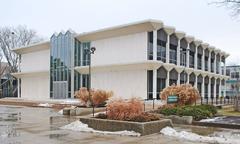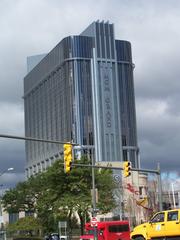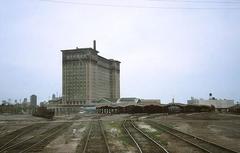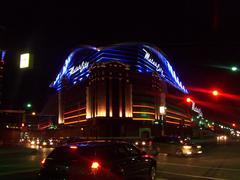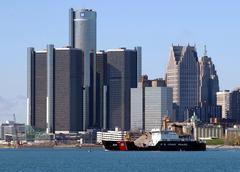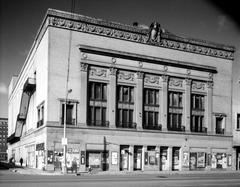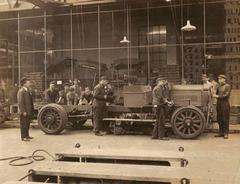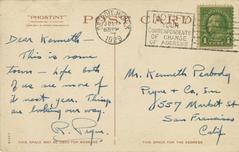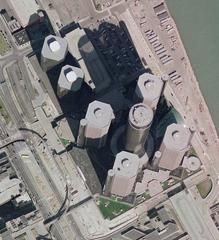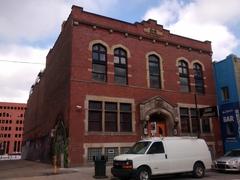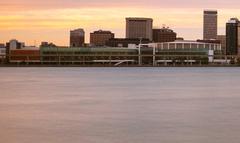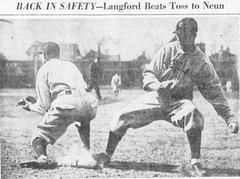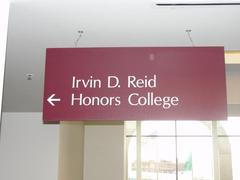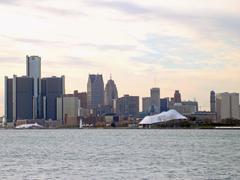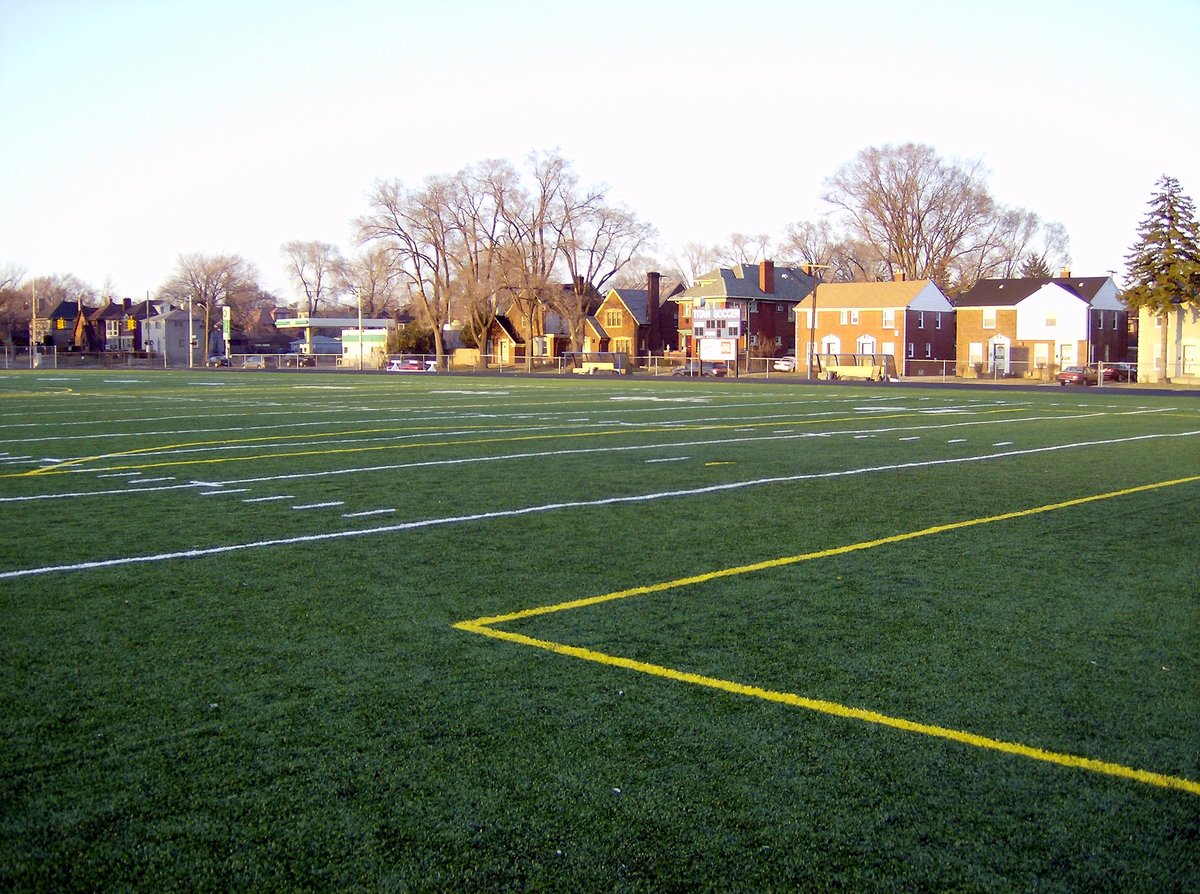
University of Detroit Stadium: Visiting Hours, Tickets, and Guide to Detroit Historical Sites
Date: 14/06/2025
Introduction
The University of Detroit Stadium—known variously as U of D Stadium, Titan Stadium, or Dinan Field—played a pivotal role in Detroit’s athletic and cultural narrative throughout the 20th century. Though demolished in 1971, its legacy continues to shape Detroit’s sports identity, notably as the birthplace of the Detroit Lions’ Thanksgiving Day tradition. While the stadium itself no longer exists, its site on the University of Detroit Mercy campus remains a point of historical interest for sports fans and history enthusiasts alike. This comprehensive guide explores the stadium’s history, provides practical visitor tips, highlights nearby attractions, and offers travel advice for those eager to connect with Detroit’s vibrant sports heritage.
Table of Contents
- Historical Overview
- Visitor Information
- Travel Tips and Accessibility
- Nearby Attractions
- Frequently Asked Questions (FAQ)
- Visuals and Media
- References and Related Links
- Conclusion and Call to Action
Historical Overview
Origins and Construction
Built in 1922 as a centerpiece of the University of Detroit’s new McNichols campus, the University of Detroit Stadium quickly became a focal point for collegiate athletics and community life (American Football Database). With a north-south orientation, seating for up to 25,000 fans, and a surrounding running track, it reflected the era’s multi-purpose sports architecture.
Primary Tenants and Early Significance
The University of Detroit Titans football team called the stadium home from its opening until the program’s end in 1964. In 1928, the NFL’s Detroit Wolverines joined as tenants for their single season, reinforcing the stadium’s early influence on professional football in the city (Retroseasons).
The Detroit Lions Era and Thanksgiving Tradition
The arrival of the Detroit Lions in 1934 marked a new era. The stadium witnessed the Lions’ 1935 NFL Championship victory and, most significantly, the inception of the team’s annual Thanksgiving Day game—a tradition that remains a cherished part of American football culture today (Clio).
Other Notable Tenants and Events
Beyond football, the stadium hosted Wayne University (now Wayne State) games, track meets, concerts, and community events. In the late 1960s, it briefly housed the Michigan Arrows (Continental Football League) and the Detroit Cougars soccer club, the latter notably remembered for a 1967 on-field riot.
Architectural Features and Community Role
Distinguished by its unique lighting towers and horseshoe design, the stadium was more than a sports venue—it was a gathering place for students, alumni, and Detroit residents, fostering community engagement and school spirit.
Decline and Demolition
After the university football program ended and professional teams moved on, the stadium saw diminished use. It was demolished in 1971, replaced by a campus parking lot, though its legacy endures in the memories of Detroiters and the city’s ongoing sports traditions.
Visitor Information
Current Status and Access
The original University of Detroit Stadium no longer stands. The site is now a parking area on the University of Detroit Mercy’s McNichols campus, located near the intersection of McNichols Road and Fairfield Street. There are no entry fees or tickets required to visit the location, and the campus is typically open to the public during daylight hours (approximately 8:00 AM–8:00 PM), subject to university operations and events.
- Tip: Always check the University of Detroit Mercy Official Website or contact the visitor center for the most current information about campus access, special events, or any restrictions.
Campus Tours and Memorials
While there is no dedicated memorial at the former stadium site, the university occasionally offers campus tours that may touch on the stadium’s history. For deeper exploration, visitors can access university archives by appointment or visit the Detroit Historical Museum for exhibits on local sports history.
Travel Tips and Accessibility
- Getting There: The campus is easily accessible by car (parking available on-site), and Detroit’s DDOT buses serve the area. Use McNichols Road and Fairfield Street as your navigation reference.
- Accessibility: The campus and most nearby attractions are wheelchair accessible. For specific needs, contact the university in advance.
- Safety: The campus and surrounding Stadium District are generally safe during daytime and event hours. Remain vigilant at night and in less crowded areas (Safe Travel Guide).
- Weather: Detroit’s weather varies; pack appropriately—layers for summer, warm coats for winter (Lonely Planet).
Nearby Attractions
- Ford Field: Home to the Detroit Lions, offering tours and interactive exhibits (Visit Detroit).
- Comerica Park: Detroit Tigers’ stadium, featuring family-friendly attractions like a baseball museum, carousel, and Ferris wheel (The Ballpark Guide).
- Little Caesars Arena: Home to the Pistons and Red Wings, plus concerts and events.
- Detroit Historical Museum: A rich resource on the city’s sporting and cultural heritage.
Tip: Combine your campus visit with tours of these sites for a comprehensive Detroit sports experience. Many venues require advance ticket purchases, especially for tours and events.
Frequently Asked Questions (FAQ)
Q: Can I visit the original stadium?
A: The stadium was demolished in 1971. You can visit its former site on the University of Detroit Mercy campus, but no stadium structure remains.
Q: Are there any markers or memorials at the site?
A: There is no formal memorial, but university archives and the Detroit Historical Museum offer context and exhibits.
Q: Do I need tickets to visit the site?
A: No tickets are needed for casual visits. Some campus tours or special events may require registration.
Q: Is the site accessible for those with disabilities?
A: The campus is generally accessible. Contact the university for more detailed information if you have specific requirements.
Q: What other sports historical sites are nearby?
A: Ford Field, Comerica Park, and the Detroit Historical Museum are all within easy reach and offer immersive experiences.
Visuals and Media
To enrich your understanding, seek out:
- Historic photographs and aerial images of the stadium (available via university archives and the Detroit Historical Museum).
- Maps highlighting the stadium’s original location on campus.
- Occasional retrospectives or documentaries on Detroit’s sports legacy.
References and Related Links
- University of Detroit Mercy Official Website
- Detroit Historical Museum
- Detroit Lions History
- Retroseasons: University of Detroit Stadium
- American Football Database: University of Detroit Stadium
- Clio: Detroit Lions Thanksgiving Tradition
- JRZY: Michigan’s Pro Sports – Detroit’s Big Four and Beyond
- Detroit Historic District Information
- Wayward Blog: Detroit Michigan Weekend Travel Guide
- Visit Detroit: Events and Sports
- Hoff to See the World: Things to Do in Detroit
- Safe Travel Guide: Detroit Michigan
- Lonely Planet: Things to Know Before Traveling to Detroit
- Itinerant Fan: Comerica Park Guide
Conclusion and Call to Action
The University of Detroit Stadium’s story is much more than bricks and mortar—it’s a testament to Detroit’s enduring love of sports, community spirit, and resilience. Although the stadium itself has vanished, its legacy thrives through the traditions it established, the community it galvanized, and the ongoing celebration of Detroit’s athletic culture.
Plan your visit to the University of Detroit Mercy campus and nearby historic sites to experience this rich heritage firsthand. For curated travel guides, event updates, and interactive maps, download the Audiala app and follow us on social media. Continue your journey by exploring related articles, joining campus tours, and visiting Detroit’s legendary sports venues.
Keep the history alive—discover, connect, and celebrate Detroit’s sporting legacy today.
